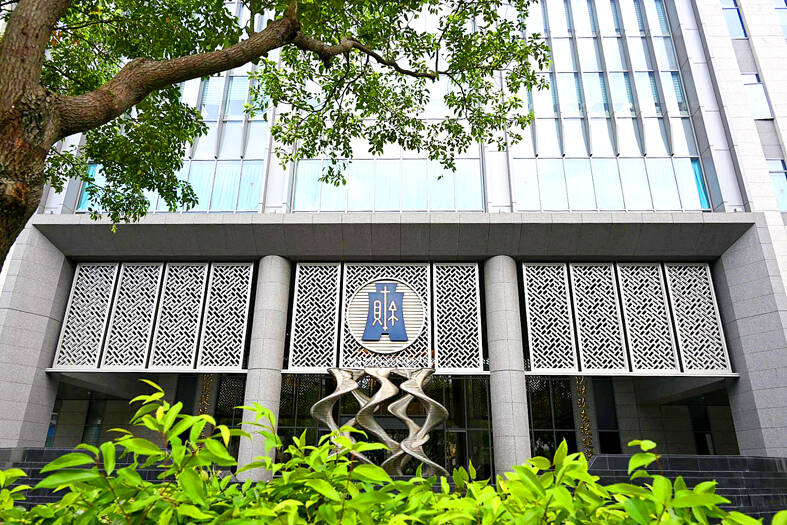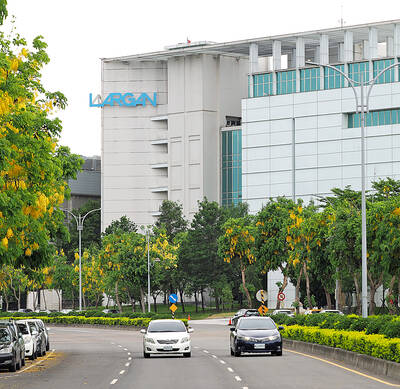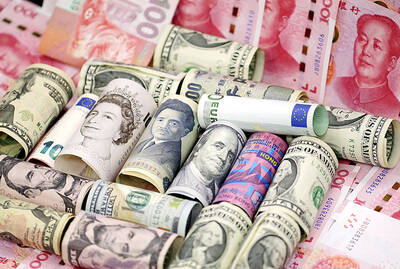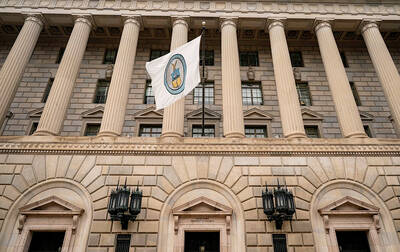Starting next year, Taiwan would adjust income tax rates for multinational enterprises (MNEs) to align with the Organisation for Economic Co-operation and Development’s (OECD) global minimum tax framework, the Ministry of Finance said in a statement on Wednesday.
MNEs with operations in Taiwan would be taxed at 15 percent, up from the current 12 percent, the ministry said.
The taxes would take effect when the businesses file their taxes in 2026, it said.

Photo: Chang Chia-ming, Taipei Times
Small and medium-sized enterprises as well as large businesses with an effective tax rate of 15 percent would not be affected, it added.
According to the OECD, the new tax rules apply to any MNEs with consolidated annual revenues of more than 750 million euros (US$831 million) for any two fiscal years within the past four years. These companies would be subject to a 15 percent effective minimum tax rate wherever they operate.
This measure aims to reduce the incentive to shift profits to low-tax countries, while also conforming with the ability-to-pay principle, the ministry said.
Currently, 60 countries or regions around the globe have announced they would adopt the global minimum tax. These include Taiwan’s neighbors Japan, South Korea, Singapore and Hong Kong, as well as some of Taiwan’s main trade partners, such as EU countries and Canada, the ministry said.

Handset camera lens maker Largan Precision Co (大立光) on Sunday reported a 6.71 percent year-on-year decline in revenue for the third quarter, despite revenue last month hitting the highest level in 11 months. Third-quarter revenue was NT$17.68 billion (US$581.2 million), compared with NT$18.95 billion a year earlier, the company said in a statement. The figure was in line with Yuanta Securities Investment Consulting Co’s (元大投顧) forecast of NT$17.9 billion, but missed the market consensus estimate of NT$18.97 billion. The third-quarter revenue was a 51.44 percent increase from NT$11.67 billion in the second quarter, as the quarter is usually the peak

Taiwan’s foreign exchange reserves hit a record high at the end of last month, surpassing the US$600 billion mark for the first time, the central bank said yesterday. Last month, the country’s foreign exchange reserves rose US$5.51 billion from a month earlier to reach US$602.94 billion due to an increase in returns from the central bank’s portfolio management, the movement of other foreign currencies in the portfolio against the US dollar and the bank’s efforts to smooth the volatility of the New Taiwan dollar. Department of Foreign Exchange Director-General Eugene Tsai (蔡炯民)said a rate cut cycle launched by the US Federal Reserve

The US government on Wednesday sanctioned more than two dozen companies in China, Turkey and the United Arab Emirates, including offshoots of a US chip firm, accusing the businesses of providing illicit support to Iran’s military or proxies. The US Department of Commerce included two subsidiaries of US-based chip distributor Arrow Electronics Inc (艾睿電子) on its so-called entity list published on the federal register for facilitating purchases by Iran’s proxies of US tech. Arrow spokesman John Hourigan said that the subsidiaries have been operating in full compliance with US export control regulations and his company is discussing with the US Bureau of

Pegatron Corp (和碩), a key assembler of Apple Inc’s iPhones, on Thursday reported a 12.3 percent year-on-year decline in revenue for last quarter to NT$257.86 billion (US$8.44 billion), but it expects revenue to improve in the second half on traditional holiday demand. The fourth quarter is usually the peak season for its communications products, a company official said on condition of anonymity. As Apple released its new iPhone 17 series early last month, sales in the communications segment rose sequentially last month, the official said. Shipments to Apple have been stable and in line with earlier expectations, they said. Pegatron shipped 2.4 million notebook